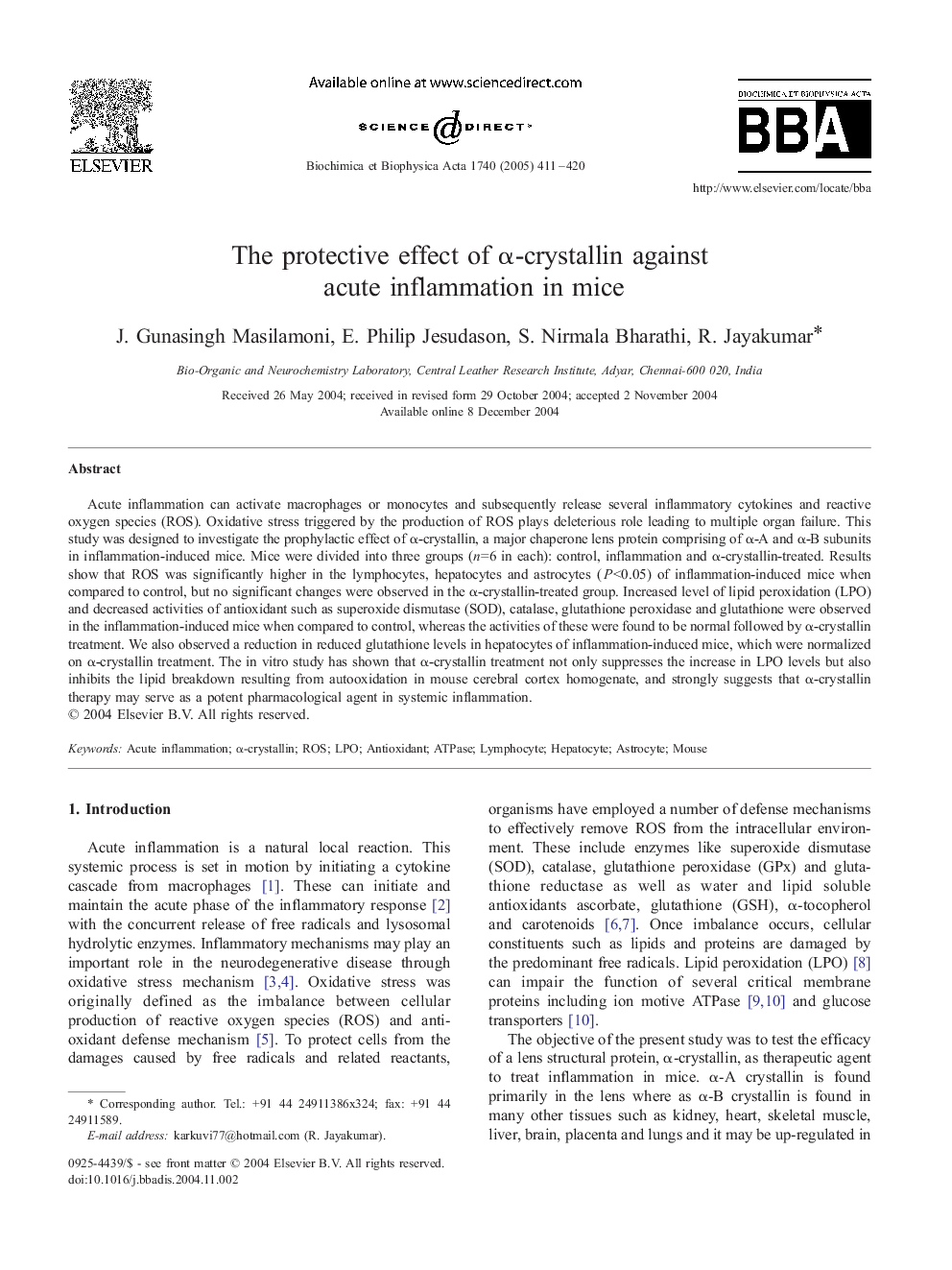| Article ID | Journal | Published Year | Pages | File Type |
|---|---|---|---|---|
| 9879452 | Biochimica et Biophysica Acta (BBA) - Molecular Basis of Disease | 2005 | 10 Pages |
Abstract
Acute inflammation can activate macrophages or monocytes and subsequently release several inflammatory cytokines and reactive oxygen species (ROS). Oxidative stress triggered by the production of ROS plays deleterious role leading to multiple organ failure. This study was designed to investigate the prophylactic effect of α-crystallin, a major chaperone lens protein comprising of α-A and α-B subunits in inflammation-induced mice. Mice were divided into three groups (n=6 in each): control, inflammation and α-crystallin-treated. Results show that ROS was significantly higher in the lymphocytes, hepatocytes and astrocytes (P<0.05) of inflammation-induced mice when compared to control, but no significant changes were observed in the α-crystallin-treated group. Increased level of lipid peroxidation (LPO) and decreased activities of antioxidant such as superoxide dismutase (SOD), catalase, glutathione peroxidase and glutathione were observed in the inflammation-induced mice when compared to control, whereas the activities of these were found to be normal followed by α-crystallin treatment. We also observed a reduction in reduced glutathione levels in hepatocytes of inflammation-induced mice, which were normalized on α-crystallin treatment. The in vitro study has shown that α-crystallin treatment not only suppresses the increase in LPO levels but also inhibits the lipid breakdown resulting from autooxidation in mouse cerebral cortex homogenate, and strongly suggests that α-crystallin therapy may serve as a potent pharmacological agent in systemic inflammation.
Related Topics
Life Sciences
Biochemistry, Genetics and Molecular Biology
Ageing
Authors
J. Gunasingh Masilamoni, E. Philip Jesudason, S. Nirmala Bharathi, R. Jayakumar,
